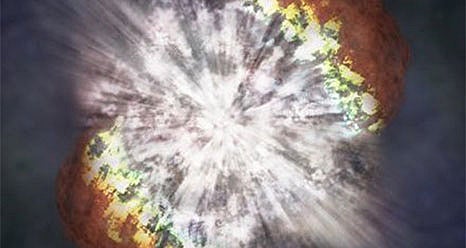However, not all supernovae end in black holes. Current models predict that a star must have a mass at least 20 times that of the Sun before the core collapse at the end of its life will result in a black hole. If any nearby supernovae didn’t meet this initial criterion — if their parent stars were only between eight and 20 solar masses — they would have left behind a neutron star, not a black hole.
Neutron stars are difficult to observe, particularly when they are old and lack a binary companion. They are typically on the order of 12 miles (20 km) in diameter and cool off over time unless they are actively accreting material from a nearby companion star. Black holes have the same observational problem — they only “light up” and become detectable when infalling matter forms a disk that emits radiation. A lone black hole with no companion accretes slowly, so it has a minimal disk and remains virtually invisible.
Finally, nothing in our Milky Way is static. Every star (and neutron star and black hole) revolves around the center of the galaxy, and also moves relative to the objects around it. This ultimately means that astronomers aren’t able to reliably wind back the clock to determine what our Sun’s surroundings looked like before it formed. A black hole or neutron star left by a nearby supernova isn’t in the same place it was billions of years ago. We may never find the exact supernova remnant or remnants that left behind the material from which our solar system formed.
Alison Klesman
Associate Editor










